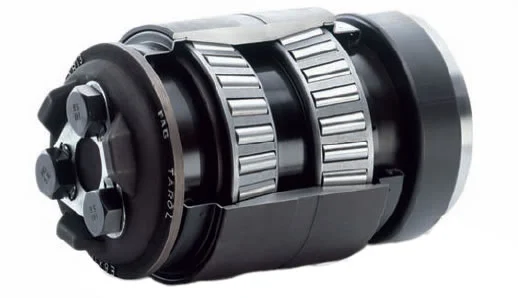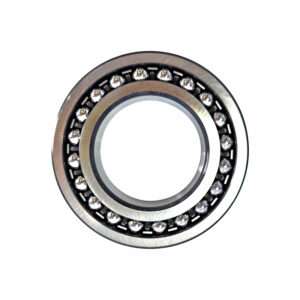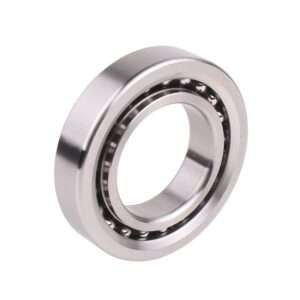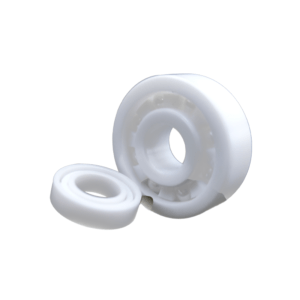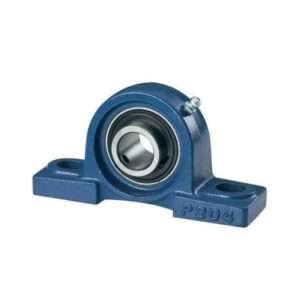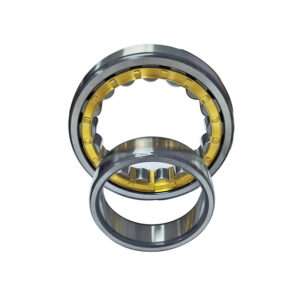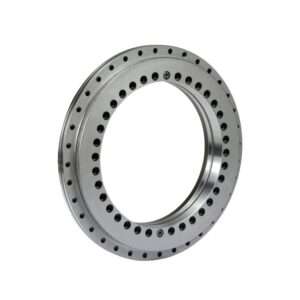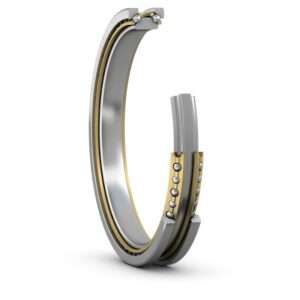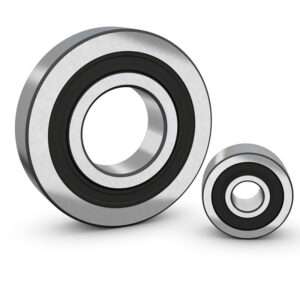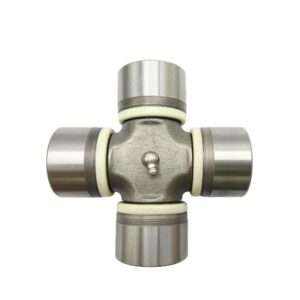Categories
Boosting Reliability: Universal Joint Cross Bearings

Table of Contents
Introduction
Universal Joint Cross Bearings are a fundamental component of various mechanical systems, playing a crucial role in ensuring the seamless transfer of torque from a vehicle’s transmission to its wheels. In this comprehensive blog post, we delve deep into the intricate world of Universal Joint Cross Bearings, aiming to provide readers with a profound understanding of their significance, the common issues they face, and the meticulous maintenance practices that can substantially enhance their reliability. Our journey begins with an exploration of what Universal Joint Cross Bearings truly are and an overview of why they are indispensable in the realm of mechanics.
Understanding Universal Joint Cross Bearings
What Are Universal Joint Cross Bearings?
Universal Joint Cross Bearings, commonly known as U-Joints or Cardan Joints, represent an ingenious mechanical coupling mechanism that facilitates flexible connections between shafts operating at varying angles. These dynamic components are predominantly utilized in applications such as drive shafts, steering systems, and other instances where the transmission of rotary motion is paramount.
Types of Universal Joint Cross Bearings
Universal joint cross bearings, also known as U-joints or universal joint crosses, come in various designs and types to suit different applications. These joints are essential components in drive shafts and are used to transmit power between two shafts at varying angles. The most common types of universal joint cross bearings include:
Single Cardan U-Joint: It has two yokes connected by a cross-shaped bearing. It’s used when you need to transmit power between two shafts that aren’t in line with each other.
Double Cardan U-Joint: This type has two single Cardan joints connected together. It’s great for smoother rotation, like in vehicle driveshafts.
Ball and Trunnion U-Joint: It uses spherical balls in trunnion cups and is very durable, often used in heavy-duty machinery.
Roller U-Joint: It uses cylindrical rollers and is suitable for high-torque applications, like heavy machinery.
Bendix U-Joint: This design uses spherical rollers and can handle high angles between shafts. It’s used where extreme angles are present.
CV Joint (Constant Velocity Joint): Though not a true U-joint, it’s used in vehicle drive shafts to keep a constant speed even when the shafts move at different angles. It reduces vibrations, often seen in front-wheel-drive vehicles.
Rzeppa Joint: This type of CV joint is used in front-wheel-drive vehicles. It consists of spherical parts to provide constant speed and efficient power transfer.
Key Components and Functionality
Universal joint cross bearings, or U-joints, have important parts and qualities:
Key Components:
Yokes: These are the parts that connect to the shafts you want to join.
Cross-Shaped Bearing: This is in the middle of the U-joint and allows the shafts to move in different directions.
Bearings: They help the U-joint move smoothly and reduce friction.
Retaining Clips or Snap Rings: These little clips hold everything in place, so nothing falls apart.
Key Features:
Flexibility: U-joints can handle shafts that aren’t in a straight line; they can bend a bit.
Transmitting Power: U-joints can pass power from one shaft to another, even when they’re not in the same line.
Constant Speed: Some U-joints can keep the speed constant, which is important for smooth operation in things like vehicles.
Durability: U-joints are built to last and work well in tough jobs.
Lubrication: Some U-joints can be greased to keep them working smoothly.
Different Types: There are various kinds of U-joints, each with specific uses.
Repairable: Some U-joints can be taken apart and fixed or maintained.
U-joints might look different depending on the type, but they all do the same thing – join shafts at different angles while transmitting power.
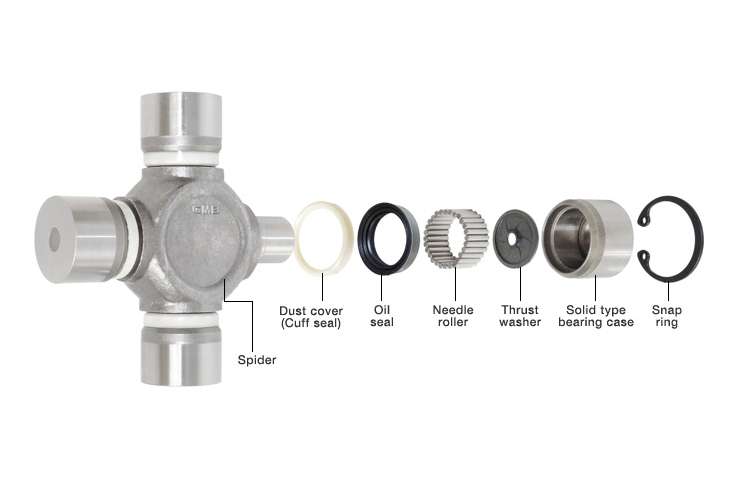
The Significance of Reliability
Why Reliability Matters in Universal Joint Cross Bearings
Reliability in universal joint cross bearings (U-joints) matters for these key reasons:
Safety: Reliable U-joints prevent accidents and damage in applications like vehicles and industrial machinery.
Performance: They ensure smooth and efficient operation, reducing vibrations and enhancing overall efficiency.
Cost Savings: Reliability leads to lower maintenance and replacement costs over time.
Productivity: Unreliable U-joints cause downtime and productivity losses.
Longevity: They have a longer service life, enduring more cycles of operation.
Customer Satisfaction: Reliable U-joints improve the quality of products and satisfy customers, leading to repeat business and recommendations.
In summary, reliability in universal joint cross bearings is vital because it ensures safe, consistent, and efficient operation of machinery and vehicles while reducing costs and downtime. It contributes to the overall performance, longevity, and quality of the equipment, which is essential for both manufacturers and end-users.
Impact of Failure on Vehicle Performance
When a universal joint cross bearing (U-joint) in a vehicle fails, it can have these effects on how the vehicle works:
Shaking and Noise: The vehicle can shake and make loud noises, which are uncomfortable.
Loss of Power: It may lose power, making it slower to accelerate.
Damage to Parts: The failure can damage other vehicle parts, like the driveshaft and differential, which is expensive to fix.
Harder to Steer: Some vehicles use U-joints in the steering system, so it might become harder to steer and control.
Unpredictable Handling: The vehicle may become harder to control, especially at higher speeds.
Driveshaft Disconnect: In severe cases, the driveshaft can come apart, which is very unsafe.
Worse Fuel Efficiency: The engine might have to work harder, leading to worse fuel efficiency.
More Wear and Tear: Other vehicle parts might wear out faster due to the extra stress.
Safety Risk: U-joint failure can be dangerous, especially at high speeds or on busy roads.
In short, when a U-joint in a vehicle fails, it can cause problems like shaking, power loss, and even safety risks, so it’s important to fix it promptly.
Industry Applications and Demands
Universal joint cross bearings have many uses in different industries. Here are six examples:
Automotive: Used for smooth power transmission in cars and must be safe and durable.
Aerospace: Ensures control in aircraft, requiring lightweight and robust designs.
Agriculture: In farming equipment like tractors, they need to be tough.
Industrial: Vital in large machinery and factories, demanding strength and longevity.
Marine: Used for boat propellers and must withstand harsh marine conditions.
Construction and Mining: Essential for heavy equipment in tough environments, needing strength and durability.
In all these industries, U-joint cross bearings are important for making sure power is transferred reliably, but the specific demands can vary, such as durability, strength, and how well they handle bending.
Common Issues and Failures
Common Problems in Universal Joint Cross Bearings
Common problems in universal joint cross bearings (U-joints) can lead to issues with the equipment or vehicle in which they are used. Here are four common problems with U-joints:
Lack of Grease: Not enough lubrication can make U-joints wear out faster.
Shaft Misalignment: When the connected parts aren’t lined up properly, it can wear U-joints down.
Too Much Force: If too much power is applied, U-joints can get damaged, especially in heavy-duty jobs.
Corrosion and Dirt: Water, dirt, or debris can make U-joints corrode and wear out quickly.
Causes of Failures and Breakdowns
Vibration and Noise: Misalignment, worn bearings, or lack of lubrication can lead to excessive vibration and noise in U-joints.
- Loss of Power: Worn or damaged U-joints can result in a loss of power transmission due to increased friction and decreased efficiency.
Driveshaft Imbalance: U-joint wear or incorrect installation can lead to imbalances in the driveshaft, causing vibrations and instability in the vehicle.
- Stiff Movement: Corrosion, contamination, or insufficient lubrication can make U-joints stiff and challenging to move, affecting overall performance.
U-joint Binding: Excessive misalignment, overloading, or damage to U-joint components can lead to binding, making it difficult for the U-joint to accommodate movement between shafts.
Recognizing Early Warning Signs
To identify early warning signs of universal joint cross bearing (U-joint) failure, consider the following five points:
Vibration and Noise: Unusual vibrations and increased noise, especially when accelerating or at certain speeds, can indicate U-joint problems. Pay attention to vibrations in the vehicle or machinery that weren’t present before.
Driveline Vibrations: Excessive driveline vibrations, felt through the steering wheel or vehicle body, can be an early sign of U-joint wear or misalignment. These vibrations may occur at various speeds and may intensify during acceleration or deceleration.
Clunking or Knocking Sounds: Listen for clunking or knocking sounds when transitioning between drive and reverse, or when the vehicle or machinery changes direction. These noises can signal U-joint issues.
Handling Issues: Reduced handling and stability, such as difficulty maintaining a straight path, can be a sign of U-joint problems. The vehicle may pull to one side or feel unstable during turns.
Visual Inspection: Regularly inspect the U-joints for signs of wear, rust, or visible damage. Look for grease leakage from the bearing caps or rust on the bearing surfaces. Any visual anomalies should be addressed promptly.
Early detection of these warning signs can help prevent further damage, reduce repair costs, and ensure the continued safe and efficient operation of the vehicle or equipment.
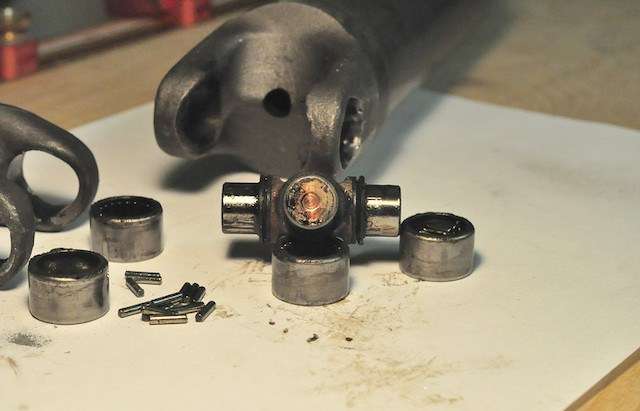
Troubleshooting and Repairs
Steps to Diagnose Issues
Certainly, here are five key points for diagnosing problems with universal joint cross bearings (U-joints):
Vibrations: Check for unusual vibrations in the vehicle or machinery, especially during acceleration or at specific speeds.
Noise: Listen for abnormal clunking, knocking, or grinding noises, which may indicate U-joint issues.
Handling Issues: Pay attention to changes in handling, such as difficulty maintaining a straight path or vehicle instability during turns.
Visual Inspection: Regularly inspect U-joints for signs of wear, rust, damage, or grease leakage.
Driveline Vibrations: Monitor driveline vibrations felt through the steering wheel or vehicle body, which can suggest U-joint problems.
These diagnostic points can help identify U-joint problems early and prevent further damage or safety issues.
DIY Repair Options
Solving universal joint cross bearing problems by yourself can be challenging and may require mechanical skills. Here are five steps for addressing U-joint issues:
Identify the Fault: Diagnose the problem by observing signs like vibrations, noise, or handling issues to pinpoint the faulty U-joint.
Safety Precautions: Ensure the vehicle or machinery is safely supported and secured. Use appropriate personal protective equipment.
Replace Damaged U-joint: If the U-joint is worn or damaged, replace it with a suitable replacement part, following the manufacturer’s guidelines or vehicle-specific repair instructions.
Proper Tools: Use the right tools and equipment for U-joint replacement, including a U-joint press, sockets, and a torque wrench.
Alignment and Torque: Ensure proper alignment of the U-joint during installation, and torque the fasteners to the manufacturer’s specifications.
Keep in mind that U-joint replacement can be a complex task, and if you’re not experienced with mechanical work, it’s advisable to consult a professional mechanic for the repair.
When to Seek Professional Assistance
Consult professionals for universal joint cross bearing failure in the following situations:
Severe Damage: When the U-joint is severely damaged, making DIY repair impractical or unsafe.
Lack of Experience: If you lack the necessary mechanical skills and tools to properly diagnose or repair U-joint problems.
Complex Systems: When U-joints are part of complex drivetrain systems in vehicles or heavy machinery, as professional expertise is often required for accurate diagnosis and repair.
Conclusion
In conclusion, Universal Joint Cross Bearings are the unsung heroes of machinery, ensuring reliable power transmission across various applications. By understanding their components, maintenance, and reliability enhancements, we can boost their performance, reduce downtime, and keep our machines running smoothly. Whether you’re in the automotive industry, agriculture, or any other field, the knowledge gained from this blog post can make a significant difference in the reliability of Universal Joint Cross Bearings. It’s time to ensure that these small components continue to play a big role in our daily lives.
Related Posts
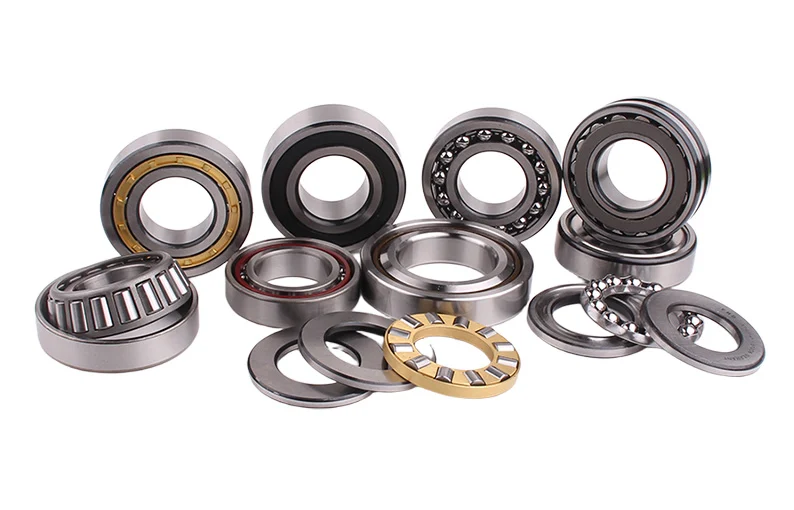
Bearing Code
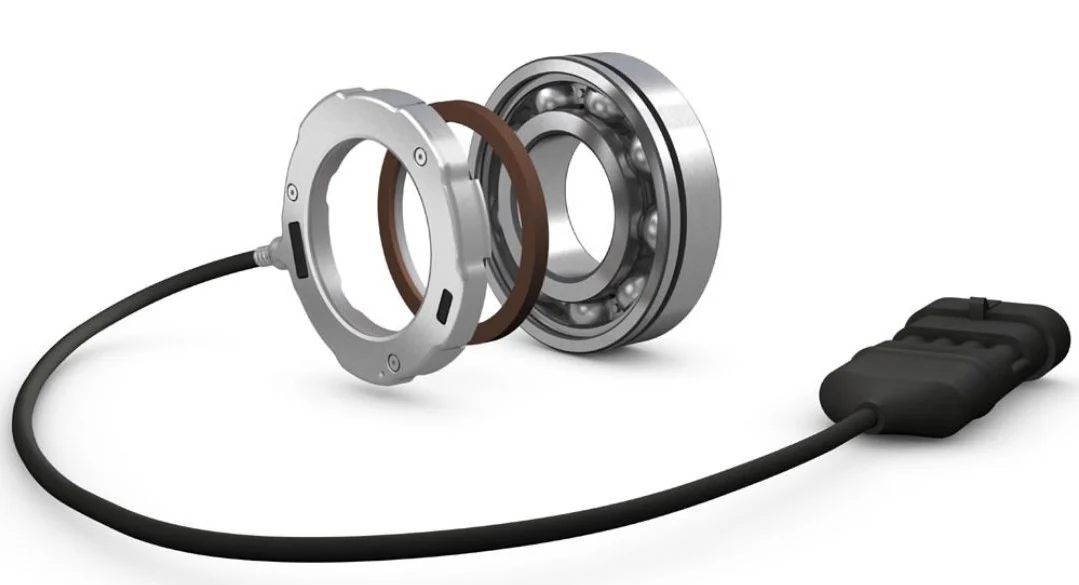
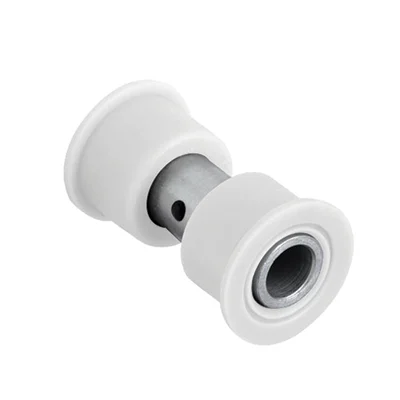
Delrin Bearings: Lubrication-Free Long Life
